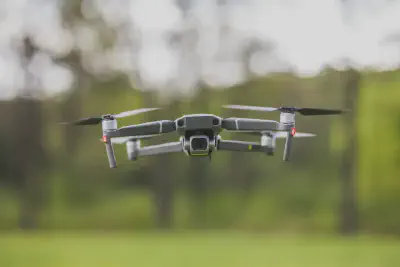Drone Payloads - Definition, Types, and Importance
June 24, 2021 in Aerospace, Drones by ![]() Dhulkarnayn—3 minutes
Dhulkarnayn—3 minutes
Payloads are one of the sub-systems in Unmanned Aerial System (UAS), which are mounted in the Unmanned Aerial Vehicles (UAV) and can be controlled from the Ground Control Station (GCS) or through a Remote Controller (RC).
Image Credits: People illustrations by Storyset
Some of the commonly used payloads in Unmanned Aerial Vehicles (UAV) are camera, LiDAR, Thermal Imager, etc.,
Types of Payloads
We classify payloads into four types based on the way they’re mounted to the drone and based on their operation throughout the flight/mission:
The former two were categorized based on the way they were mounted, and based on their working latter two were categorized as mentioned earlier.
Dispensable Payloads
All the deliverable payloads to the consumer end are considered dispensable payloads. The dispensable payloads can able to release from the aerial vehicle during the flight based on the received signal from the radio controller(RC) or ground control station (GCS). In some cases, it’ll automatically be released based on the previously entered destination location.

Image Credits: People vector created by pch.vector - www.freepik.com
Non-Dispensable Payloads
The Non-Dispensable payloads physically remain on the UAV throughout the mission, but their part plays a vital role in mission completion. Some of well know Non-Dispensable payloads are camera, LiDAR, companion computers, etc.,
The most widely used payload types in numerous applications, such as Mapping, Surveillance, Wildlife Monitoring are Non-Dispensable payloads.
Image Credits: People illustrations by Storyset
Active Payloads
The payloads which are entirely or partially active throughout the mission are called Active Payloads. The purpose of the active payload includes mapping, data collection, surveillance, and so on. Camera, LiDAR, Thermal Imager, etc., are considered active payloads.

Image Credits: Nature photo created by diana.grytsku - www.freepik.com
Passive Payloads
The payloads which are inactive during the mission are called Passive Payloads. Mostly, passive payloads are deliverable at some predefined destination.
Image Credits: Technology illustrations by Storyset
Importance of Drone Payloads
In recent times, growth of the unmanned vehicles is exponentially higher and there are many applications that are profoundly beneficial for the general public.
Image Credits: Technology illustrations by Storyset
Nowadays, numerous drone organizations are simply replacing the payloads in the unmanned aerial vehicle for various applications instead of making a new vehicle.
Similarly, if the obstacle avoidance sensors (LiDAR) is not operative in flight means, then there are higher chances of physical damages to the vehicle and also to the humans near the flight area.
The criticality of the payload is proportional to how dependent the vehicle is on that payload. For example, If the landing procedure is based on the continuous correction from visual data (camera) and the non-operative state of that payload in-between landing phase may cause severe damages.
Conclusion
In conclusion, this overview aimed to elucidate the definition, diverse types, and the crucial significance of payloads in the realm of drones, drawing insights from a spectrum of reputable sources. Your engagement in this discourse is highly encouraged, and I eagerly await your valuable feedback and suggestions to enhance the depth and accuracy of our understanding on this intricate subject.
The comments section below serves as an open forum for you to share your thoughts, questions, and experiences related to drone payloads. Let’s foster a community of knowledge exchange and collaborative learning. Your perspectives are integral to enriching the conversation and ensuring a comprehensive exploration of this dynamic field.
Remember, Sharing is Caring! If you found this article insightful or informative, do not hesitate to share it with your friends and colleagues. Your support in spreading knowledge is immensely appreciated. Thank you for being part of this learning journey!
This post is licensed under Creative Commons Attribution-ShareAlike 4.0 International (CC BY-SA 4.0) by the author.
Please consider supporting this project!
If this article has been of help to you, and you feel generous at the moment, don’t hesitate to buy us a coffee. It's an easy, fun and direct way to show your support — any amount of coffee is highly appreciated.